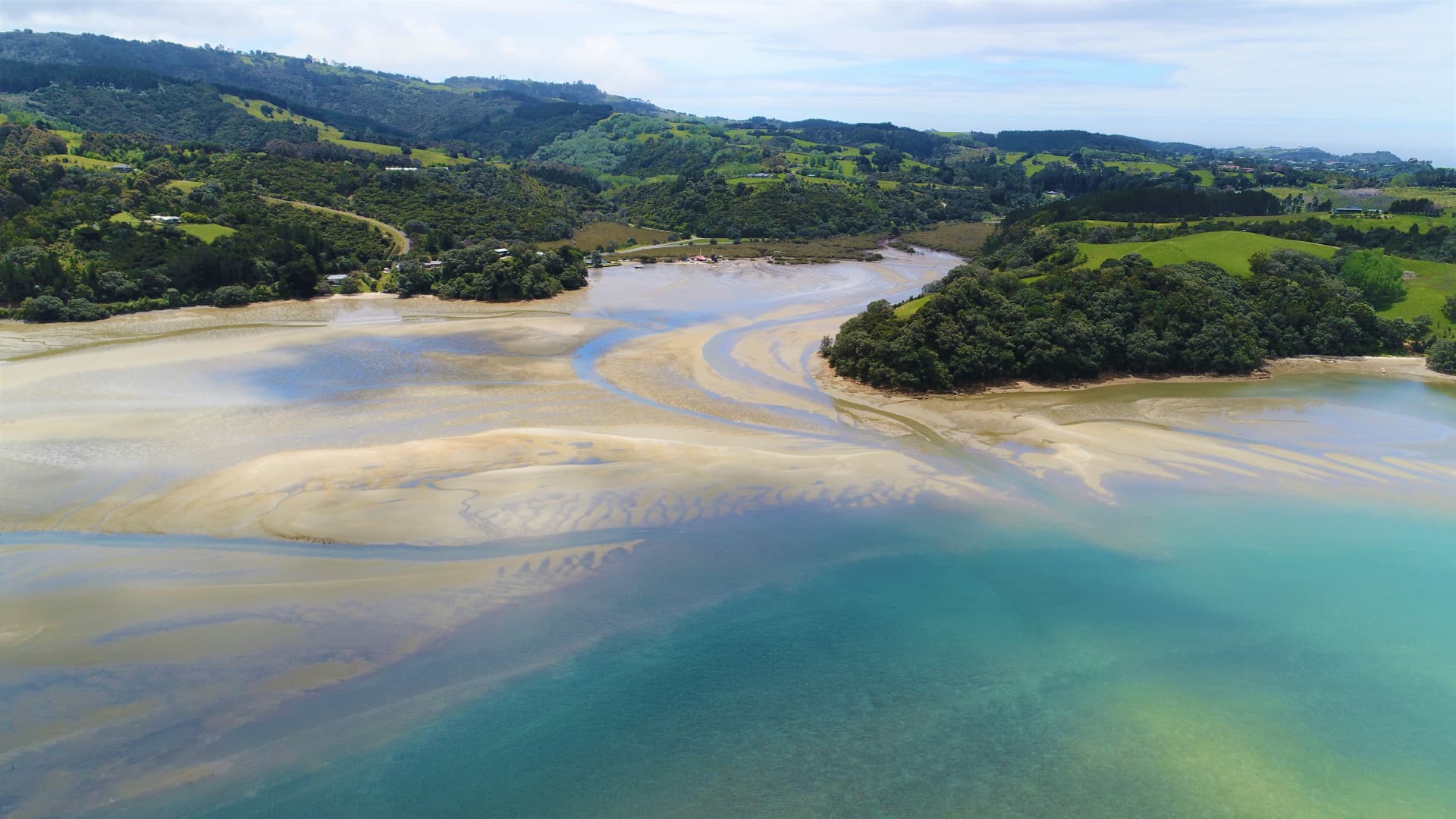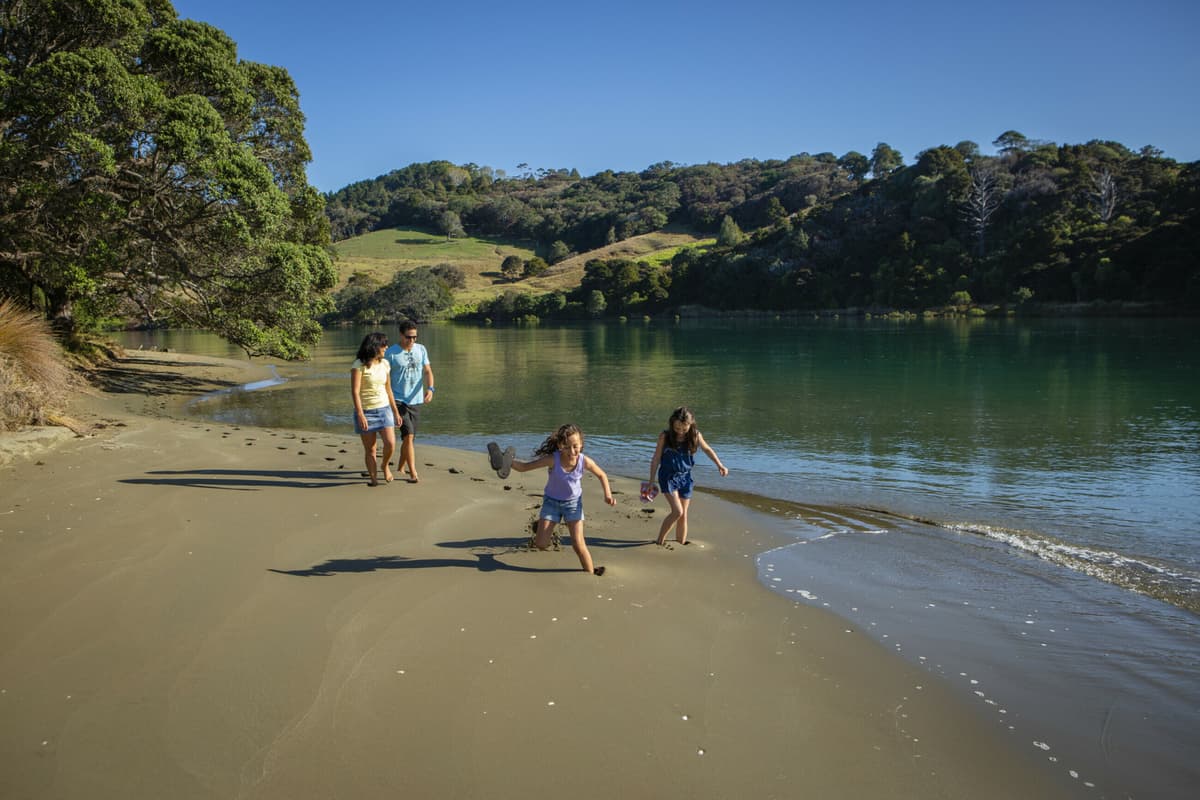

Lohrer D, Awatere S, Paul-Burke K, Kitson J, Schwarz A-M (April 2024)
Ki uta ki tai is a te ao Māori concept that more holistically encompasses and appreciates the interconnectedness of all parts of the system. The concept includes, but is not limited to, the connectivity between land, freshwater, estuaries, oceans, and climate.
Two of New Zealand’s National Science Challenges (Sustainable Seas, Our Land & Water), in partnership with the Ministry for the Environment, embarked upon a combined programme of work known as the ‘Ki uta ki tai’ project. It aimed to achieve impact by bringing knowledge streams together through shared visions, values, and processes to inform catchment-based solutions that would ultimately improve the mauri of catchments and estuaries.
The project sought to make progress towards integrated estuarine ecosystem management reflecting Ki uta ki tai concepts by:
Working with mana whenua requires a willingness to engage in authentic relationships, open communication and face-to-face meetings to discuss the concerns, aspirations and priorities of localised species and spaces. Joint fieldwork and excursions to sites of interest were extremely informative and critical to the success of our project. Engaging at the local level was found to be the most appropriate and productive approach.
We developed metrics of exposure of individual estuarine sites to freshwater contaminants by (i) using rating curves to generate time-series freshwater load data, and (ii) spatially distributing those loads to sites where we had estuarine health data. We then explored drivers of change in estuarine health metrics, including exposures to suspended sediments, total nitrogen, total phosphorus, and E. coli (from freshwater) along with oceanic and climate-related drivers such as sea surface temperatures and El Niño strength.
Estuarine health, as indicated by estuarine macrobenthic invertebrates, responded to multiple environmental stressors and drivers—not just freshwater ones. Responses to freshwater contaminant exposures were often delayed (lagged) and were inconsistent even across sites within estuaries. However, multiple lines of evidence from intertidal and subtidal sampling across estuarine receiving environments exposed to differing freshwater sediment loadings revealed:
To improve the health of productive and valuable estuarine receiving bodies, we must embrace Ki uta ki tai concepts in our management practice and continue to improve appropriate interconnectivity between knowledge streams (mātauranga Māori, western science) and across disciplines (land, freshwater, estuarine, ocean). We share experiences, learnings, and key findings from the Ki uta ki tai project in this brief guidance document.
